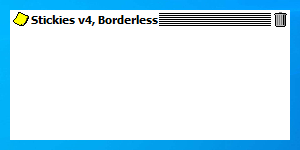
The recovered fiber from waste paper and paperboard such as old newspaper (ONP), old magazine (OMG), mixed office waste (MOW), sorted white ledger (SWL), sorted office paper (SOP), and old corrugated carton (OCC) has become a principal source of raw material for making paper in the US and Europe, with significant growth in China and other Asian countries. In a more specific aspect, this invention relates to the use of a modified kaolin-based composition for the removal of stickies from waste paper and paperboard. The present invention relates to the removal of stickies from waste paper and paperboard. The method of claim 5, wherein said stickies removal operation comprises washing. A waste paper and waste paperboard contaminants removal method utilizing the composition as described in claim 1.ġ6. The method of claim 5, wherein said pulp is formed by a process comprising: shredding said waste paper or waste paperboard product to form a shredded waste product and mixing said shredded waste product with hot tap water.ġ5. The method of claim 5, wherein the nonionic surfactant is selected from a group comprising fatty acid ethoxylates, fatty alcohol ethoxylates, castor oil ethoxylates, polyethylene glycol esters, polypropylene glycol esters or blends thereof.ġ4. The method of claim 11, wherein the modifying reagent is selected from a group comprising a fatty acid, hydroxamate, sulfonate, amine, siloxane, silane, sulfhydryl, or blends thereof.ġ3. The method of claim 5, wherein said modified kaolin-based stickies removal component is produced by a process which comprises: forming a slurry of dispersed kaolin clay particles treating the dispersed kaolin clay particles with a modifying reagent and separating the modified kaolin-based particles from the non-reactive kaolin-based particles.ġ2.

The method of claim 9, wherein said mixture comprises said composition in a concentration of 1-2 pounds of composition per dry ton of waste paper/paperboard in said pulp.ġ1. The method of claim 5, wherein said mixture comprises said composition in a concentration of from 0.2 to 20 pounds of composition per dry ton of waste paper/paperboard in said pulp.ġ0.

The method of claim 5, wherein said stickies removal operation comprises flotation.ĩ. The method of claim 5, wherein said stickies removal operation comprises screening.Ĩ.

The method of claim 5, wherein said stickies removal operation comprises centrifugation.ħ. A method of removing contaminants from waste paper and waste paperboard, the method comprising: forming a pulp of waste paper or waste paperboard product adding a composition comprising a nonionic surfactant and a modified kaolin-based stickies removal component to said pulp to form a mixture and subjecting said mixture to a stickies removal operation.Ħ. A composition as defined by claim 3, wherein the modifying reagent is selected from a group comprising a fatty acid, hydroxamate, sulfonate, amine, siloxane, silane, sulfhydryl, or blends thereof.ĥ. A composition as defined by claim 1, wherein the modified kaolin-based stickies removal component is produced by a process which comprises: forming a slurry of dispersed kaolin clay particles treating the dispersed kaolin clay particles with a modifying reagent and separating the modified kaolin-based particles from the non-reactive kaolin-based particles.Ĥ. A composition as defined by claim 1, wherein the nonionic surfactant is selected from a group comprising fatty acid ethoxylates, fatty alcohol ethoxylates, castor oil ethoxylates, polyethylene glycol esters, polypropylene glycol esters or blends thereof.ģ.

A composition for removing contaminants from waste paper and waste paperboard, wherein the composition comprises a nonionic surfactant and a modified kaolin-based stickies removal component.Ģ.


 0 kommentar(er)
0 kommentar(er)
